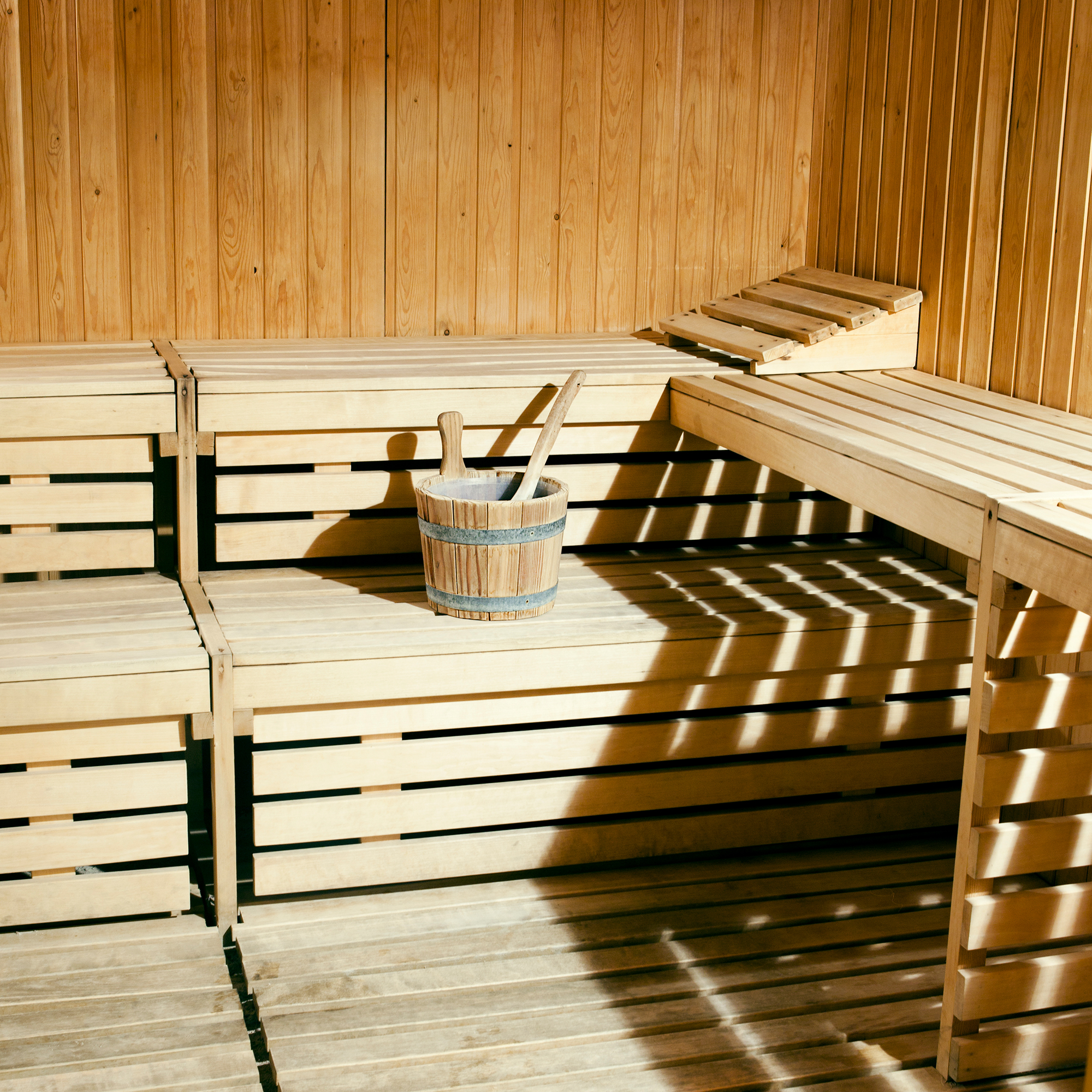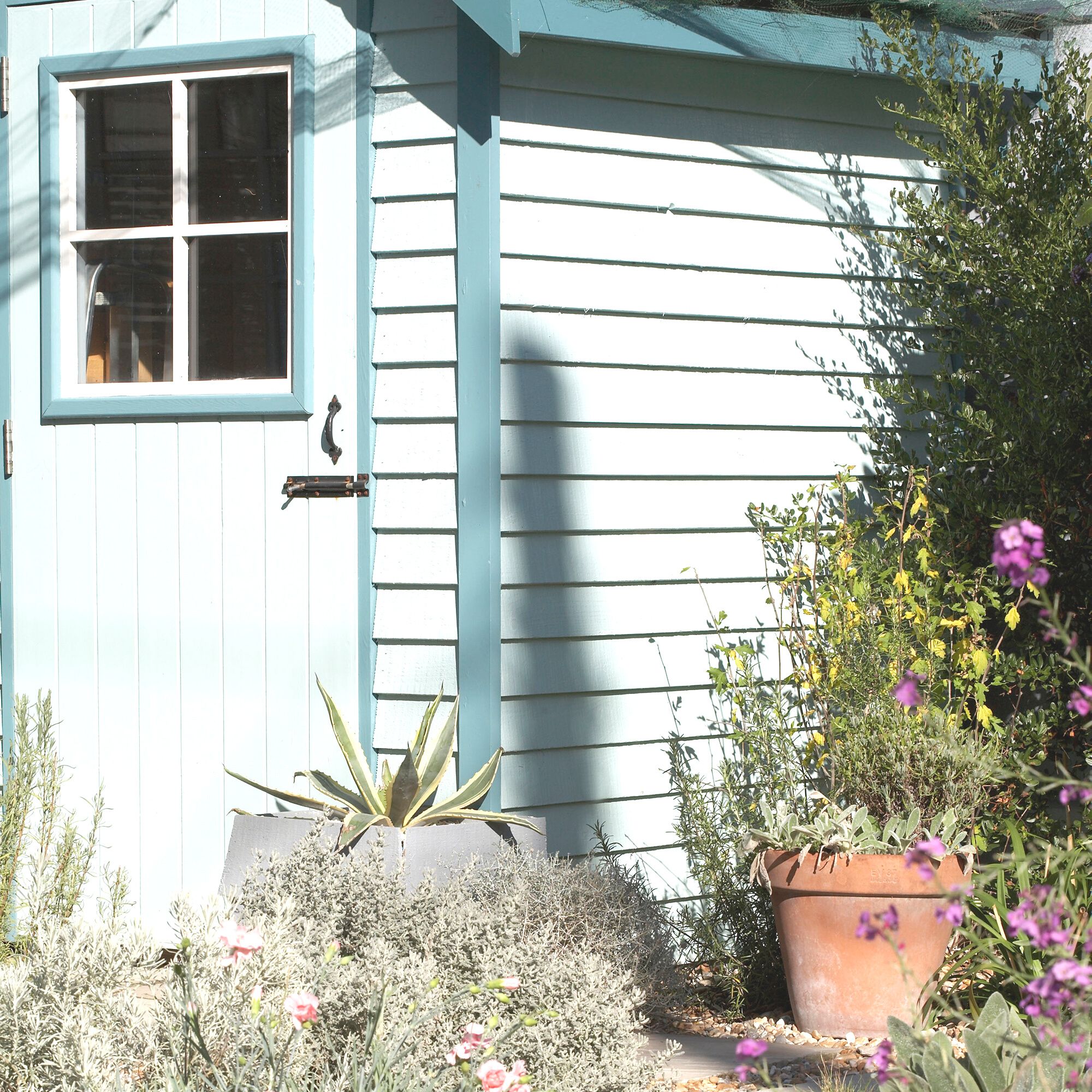Can you turn a shed into a sauna? Here’s everything you need to know
Imagine having your very own spa-like space in your garden!


A garden shed can certainly come in handy for storing everything from your lawn mower and gardening tools, to outdoor furniture and even toys. But the humble shed can actually serve even more purposes. And turning a traditional garden shed into a sauna is one of the more unique and interesting garden shed ideas that we’ve come across.
But how exactly do you go about converting it? Well, we asked the experts and you might be surprised to find out that it’s not as tricky as you might imagine to have your very own sauna in your back garden.
Converting a shed into a sauna is a great way to create a relaxing retreat for you and your family. But there are a number important factors to take into consideration before you get started on this DIY project.
Can you turn a shed into a sauna?

So, if you’re thinking of adding an at-home sauna to your garden, you’ll want to keep reading to find out everything you need to know about the process of converting a shed into a sauna.
What are the regulations for turning a shed into a sauna?
While ‘the UK doesn’t have specific regulations for building a sauna in a shed, it's still crucial to check your local council’s building by-laws,’ warns Robert Quinton, DIY Expert and Owner of Construction Megastore. This is because building regulations vary widely depending on location.
For example, ‘shed saunas may be grouped with outbuildings, which typically have size limitations and required distances from property lines,’ admits Paul Gibbens, Marketing Manager and Property Specialist at housebuyers4u.co.uk.
Most traditional sheds fall under permitted development, as long as you adhere to a number of rules. ‘In short, this means that as long as you satisfy specific criteria, outbuilding planning permission is automatically granted. This rule also covers sauna cabins,’ advises MyBuilder.com’s renovations expert, Andy Simms.
Sign up to our newsletter for style inspiration, real homes, project and garden advice and shopping know-how
We’ve put together a definitive guide on whether or not you need planning permission for a shed. But essentially, ‘if your sauna involves structural changes (like adding permanent insulation or ventilation) or exceeds a certain size threshold (check with your local council), you might need approval,’ says Andrew Wilcox, Founder of Cuprinol Shed of the Year.

‘There are also additional exceptions which could mean you’re not allowed a shed in your garden, such as if your property is a listed building or is in a conservation area, so it is always best to seek building regulation approval from your local authority,’ continues renovation expert Andy.
Then there’s the matter of fire and electrical safety. ‘Saunas require specialised electrical equipment like heaters and controls. It's crucial to ensure safe installation by a qualified electrician registered with a competent person scheme like NICEIC or ELECSA,’ says Shed of the Year judge Andrew.
And with wood being a common sauna material, fire safety is essential. You’ll want to ‘use fire-resistant materials where necessary and consider installing smoke detectors,’ adds Andrew.
What kind of sheds work best as saunas?
‘Luckily, wood is the ideal choice for a sauna and is usually what people’s sheds are made out of,’ says DIY expert Robert. ‘But arguably and most importantly, it’s essential you consider the condition of your shed before you start trying to turn it into a sauna. The shed should be structurally sound and free of leaks and a good coat of paint on the exterior can help with weatherproofing.’
You’ll also want your shed to be spacious enough to comfortably fit two to three people. ‘This, of course, will be largely dependent on the size of your shed,' says Robert. 'But if you aim for a minimum of 6ft x 4ft, you should be able to comfortably accommodate one or two people.'

How should a shed sauna be designed?
There are a few important factors to consider as you go about designing and putting together your shed sauna. Insulation is the first thing you need to think about, as it’s paramount for retaining heat and preventing your shed from incurring moisture damage.
You’ll also need to consider ventilation. Andrew recommends ‘installing a vent near the ceiling for hot air to escape and a lower vent – or gap beneath the door – to allow fresh air intake.'
And when it comes to heating the sauna, ‘electric heaters are the most common choice for saunas in the UK,’ says Robert. ‘Depending on your shed size, select one with enough power to heat your sauna effectively before also choosing lighting with low-wattage, heat-resistant bulbs to provide a gentle glow.’
How much does a shed sauna cost?
If you're thinking about converting an existing shed, the main costs will go towards insulation, ventilation, a heater and interior features like benches and lighting. According to DIY expert Robert, ‘expect to spend anywhere from £500 to £2000.’
On the other hand, if you don’t already have a garden shed, ‘prices for sheds vary greatly depending on the size and quality, but you should budget around £1000 - £2000 for a decent-sized shed,’ advises Robert.
However, when compared with the cost of ‘constructing a sauna entirely from scratch, which can see you spending £12,000 on average,’ as Brian Clarke, sauna expert and owner of UK Saunas maintains, turning a shed into a sauna can certainly save you money in the long run.

What are the pros and cons of a shed sauna?
Pros
Having a shed sauna can provide an idyllic, quiet and restful place for you to retreat to. And obviously, it’s more cost-effective than buying a pre-made sauna. Additionally, it adds a spa-like feature to your home, allowing you to use an otherwise underutilised space outside to elevate your home.
As long as you have space for a shed in your garden – whether that be a sprawling green space or a smaller footprint – you’ll be able to accommodate a shed sauna, making it a garden idea well worth considering.
Cons
Converting a shed into a sauna will require quite a bit of time and effort and it’s not the kind of project that you’ll want to attempt as your very first foray into DIY either. There’s also the matter of maintenance. ‘Regular maintenance is important for any sauna but a shed that has been converted into a sauna demands more care,’ cautions sauna expert Brian.
‘Because you're adapting a structure not originally intended for high heat and moisture, the sauna is more at risk of water damage, warping, or mould formation so you have to regularly inspect the wood and ventilation systems.’
Having your sauna housed outdoors might not be too convenient when particularly bad or wet weather prevents you from getting out to where your shed sauna is located. And this is especially true over the cold winter months.
FAQs
Do home saunas use a lot of electricity?
With energy bills higher than ever, you also need to take this into consideration when thinking about having a shed sauna in your garden.
Since 'it can take 15-35 minutes to reach the desired temperature, depending on the ambient temperature and sauna size, this means the heater is running at full capacity for an extended period,' explains Shed of the Year judge Andrew explains. ‘The average electricity cost in the UK is 31.8 pence per kilowatt-hour (kWh), so running a high-powered sauna for multiple sessions can significantly increase your electricity bill.’
But it is worth noting that infrared saunas are generally more energy-efficient than traditional saunas, as Sun Stream Saunas’ director, David Egenes, agrees. ‘An infrared sauna uses on average less than £0.80/per hour based on a tariff of 0.35/kwh.’ So, this might be a better option for those looking to save money in the long term.
Smaller saunas will also naturally require less power to heat compared to larger ones, while the frequency and duration of your sauna sessions will impact the overall electricity usage too.
What are the main benefits of an at-home sauna?
If you’ve ever been to a spa or health centre and spent some time in a sauna, you probably already know some of the health benefits of using one. But, just in case you don’t, here are just a few of the possible advantages.
Firstly, ‘regular sauna use can help with relaxation, stress management and improved sleep,’ explains shed expert Andrew. ‘The heat can also ease muscle tension and pain, potentially aiding those with arthritis or chronic pain. The increased sweating caused by saunas can also help cleanse the skin and remove impurities, potentially leading to a healthier complexion.’
Just remember that, ‘saunas are not without risks, and it's important to consult with a doctor before using one, especially if you have any underlying health conditions.'

Ellis Cochrane has been a Freelance Contributor for Ideal Home since 2023. Ellis has been writing about homes, interiors and gardens for four years now, with her also contributing to House Beautiful, Country Living, Expert Reviews, Real Homes and Stylist.